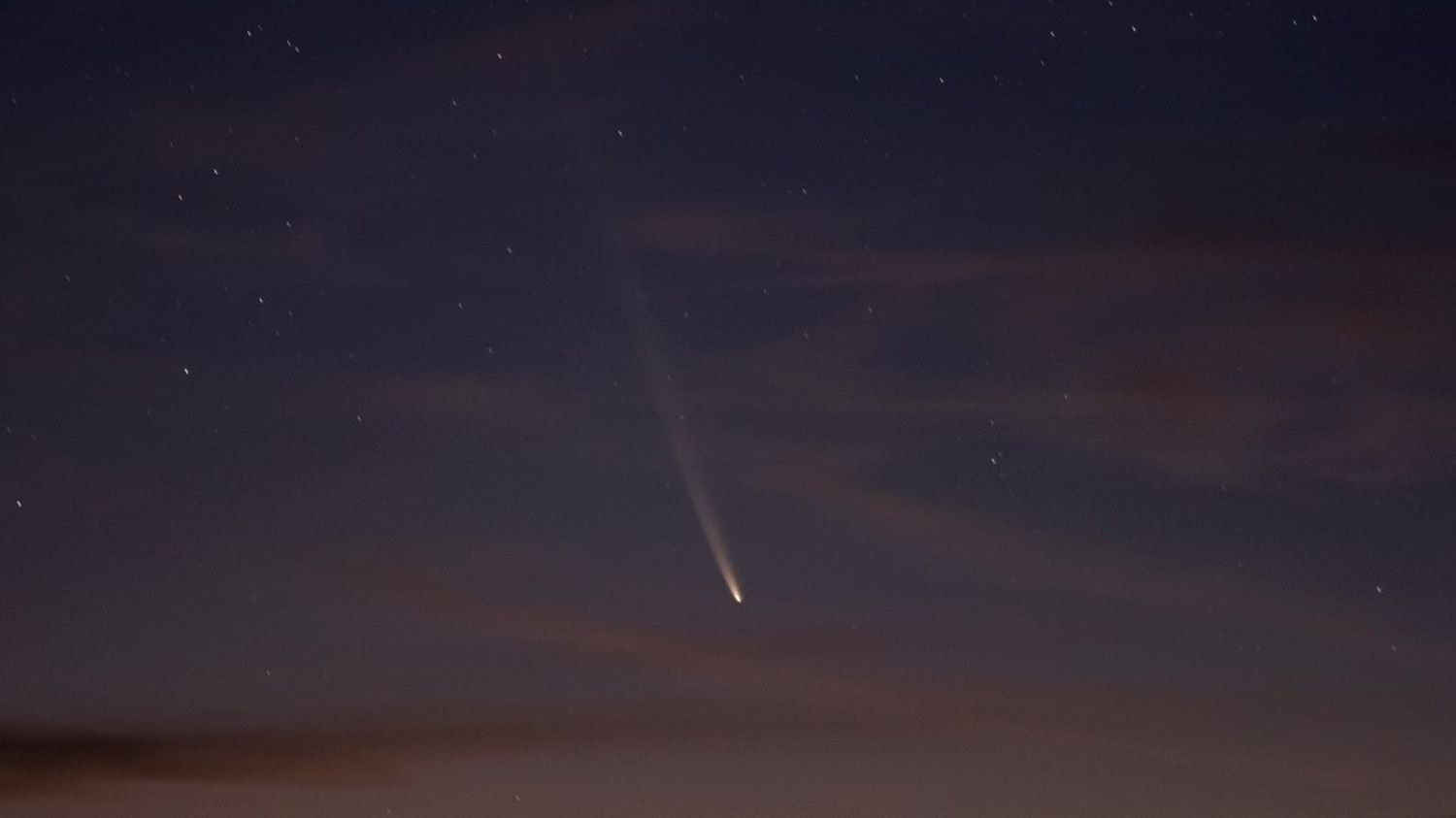To see comet C/2023 A3 Tsuchinshan-Atlas, you will have to look towards the setting sun, especially at the start of the night. If the weather is suitable, it promises a memorable spectacle every evening in October.

Published
Reading time: 5 min

It will enhance the sky of the inhabitants of the Northern hemisphere of the Earth. Comet C/2023 A3 Tsuchinshan-Atlas should be clearly visible to them from Sunday October 13. Franceinfo presents this celestial body, observable with the naked eye, which has already delighted Earthlings in the Southern Hemisphere.
It will be visible towards the setting sun, in the very early evening
How to observe this famous comet with the naked eye? Just at the end of the day, you have to look towards the setting sun and look for a point of light with a hair. To be more precise, the magazine Sky and Space has published a map to easily locate it.
Once turned towards the west, “use the tail of the Big Dipper to find in its extension a bright star, named Arcturus. The comet will be located to the left of Arcturus, more or less low”explains on X the media Xplora. This site specializing in space news also shared an animation to help you find your way in the sky.
It is important to favor the very beginning of the night, because the comet will be “then higher and higher in the sky, but also lower and lower”explained astrophysicist Eric Lagadec on It could reach a magnitude of 2.4, or a brightness almost similar to that of the Polar Star, notes the Actu.fr site. “The star presents serious assets to claim the title of ‘comet of the century’”insists the Paris Observatory. And, if the weather is suitable, “it will catch your eye” every evening, promises AFP Lucie Maquet, astronomer at the Institute of Celestial Mechanics and Ephemeris Calculation (IMCCE), located within the Paris-PSL Observatory.
It was recently discovered
Its detection dates back only to January 2023. It was first seen by the Chinese Purple Mountain Observatory (Tsuchinshan), to which it owes part of its name. Its existence was then confirmed by a telescope from the South African Atlas program (for Asteroid Terrestrial-impact Last Alert System), dedicated to the observation of asteroids close to Earth. It is therefore to this organization that the comet owes the other part of its name. Astronomers have a stricter, even arid, name: C/2023 A3.
Since its detection, the comet has been closely followed. Specialists did not know if this small body of rock and ice would survive its passage near the Sun at the end of September. But it held up thanks to its relatively massive core.
She probably comes from very (very) far away
The trajectory of comet Tsuchinshan-Atlas and its origin remain unclear. The study of its course is too short, “barely a year behind”to know precisely the path she has followed so far, astronomer Lucie Maquet explained to AFP.
The consensus idea is that this comet was probably born in the Oort cloud. The latter is a hypothetical and gigantic collection of tiny planets and celestial bodies, at the edge of the Solar System. “Scientists believe the Oort Cloud is a giant spherical shell surrounding our Solar System. It resembles a large, thick-walled bubble of icy space debris the size of a mountain or larger. The Oort Cloud may contain billions, even trillions of objects”explains NASA, the American space agency.
The Oort Cloud is generally considered to be the original home of comets with orbital periods greater than 200 years. It is to be differentiated from the Kuiper belt, which encircles the Solar System of which the Earth is a part, and which is usually the zone of origin of comets whose orbital periods are less than 200 years.

Specialists agree that comet Tsuchinshan-Atlas is in an orbit “which is not closed”. Models suggest that before being observable by humans, it could have been up to 400,000 times the Earth-Sun distance. In short, it probably traveled for millions of years across the cosmos before arriving near Earth.
It was easily observed in the Southern Hemisphere
Comet Tsuchinshan-Atlas was clearly visible in the Southern Hemisphere. A snapshot taken by astrophotography was praised by NASA’s Astronomy Picture of the Day blog, noting that it rivaled comet Neowise, which was visible in the summer of 2020.
The YouTube channel EarthSky broadcast photos taken in several countries, including Australia.
So why not roll your eyes this weekend? This show is accessible without equipment and free.
